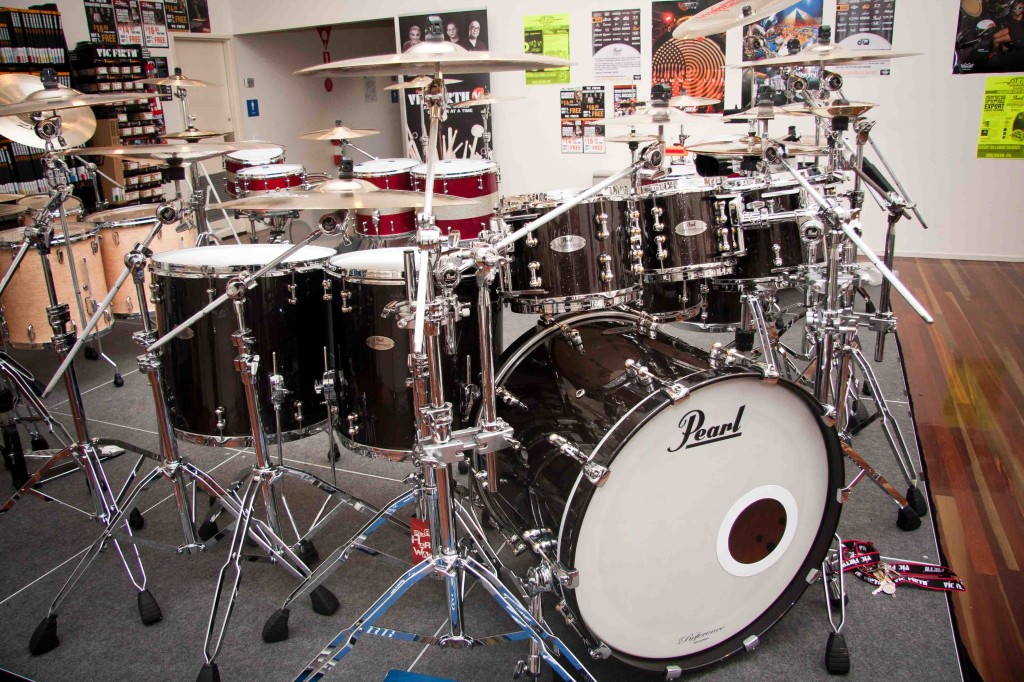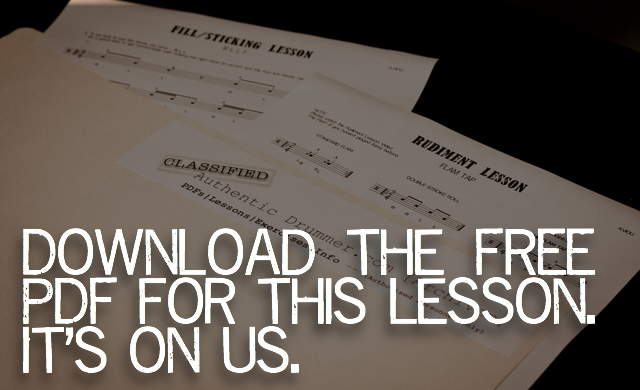Find yourself playing the same old fills all the time? Well, this lesson could be just for you.
This lesson is a simple one in its theory. Take the three basic rudiments (Single Stroke/Double Stroke & Paradiddle – lesson here if you want to refresh) and move them around the drums. Sounds simple yes, but where do you start?
My approach is pretty straightforward but I advise starting slowly as usually, you are used to the ‘sound’ of the rudiments coming from the snare drum only (or practice pad) for that matter. As soon as you add other sounds – toms, cymbals – your brain gets tricked into thinking it’s not the same thing and everything goes pear shaped. This is more apparent with the double stroke and the paradiddle. What needs to happen first is getting so comfortable with the rudiments that they become a muscle memory. By this I mean, you can play them without thinking about what each hand is doing. Each rudiment needs to be felt. Take playing a straight rock beat for example – do you think about the hi-hat as you play? Nope. Another example is walking – do you think about your legs when you walk? No. No you don’t.
When I play a paradiddle, I don’t think about what hand is coming next – it’s a muscle memory. I’m thinking about where I might go on the drums next, what’s happening with the other musicians at that moment etc. I can have a conversation with someone whilst I’m playing the paradiddle. My point is – when I go to move it onto the drums, the memory stays the same but the sounds change. I don’t stuff it up because my hands are used to the combination.
A good way to approach the actual movement is to move one hand at a time to begin with. Leave the left hand on the snare and move the right hand randomly. Doesn’t have to sound great – it’s just a movement exercise. Now, leave the right hand on the floor tom out of the way and move the left hand randomly all over the drums. Every sound you can. Then, try moving both hands. Repeat this with double strokes and paradiddles OR any other rudiment or sticking.
This will stimulate new ideas and you’ll discover new fills. It’s a great way of killing two birds with one stone by practicing rudiments and motion at the same time.
Hope you enjoy the video.



Vid doesn’t seem to work.
Sorry about that, not sure what went wrong but it seems fine now 🙂
Let me know how you go with the lesson!
I like that hi-hat pattern which starts on 9:03, can you perhaps direct me to the notations of that one in particular or some other similar patterns?
Thanks
Hi Demian. Scuse my delayed reply. I haven’t done a lesson on those grooves as such as I was just making it up. That said, I’ll try to do one! Also, I’m drawing ideas from paradiddle grooves and general broken up 16th notes on the hi-hat. Check out the following lessons.
https://www.authenticdrummer.com/groove-breaking-up-the-hi-hat/
https://www.authenticdrummer.com/groove-paradiddle-pt-1/
https://www.authenticdrummer.com/groove-paradiddle-pt2/
Thanks for the lessons!
All the best